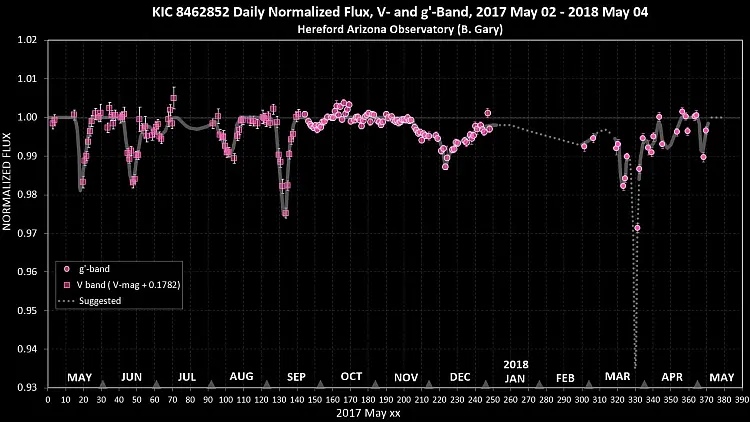Tabby's Star: A Cosmic Puzzle That Defies ExplanationTabby's Star has been dubbed the "most mysterious star in the galaxy." Explore the theories behind this astronomical phenomenon.
What is Tabbys Star?
Tabbys Star is a star located in the constellation Cygnus, approximately 1,280 light-years from Earth. It gained notoriety in 2015 when astronomers observed unusual fluctuations in its brightness, leading to speculation that it may be surrounded by an alien megastructure. However, subsequent research has suggested other possible explanations for the star's behaviour, including the presence of dust or comets in its orbit. Despite the ongoing study, Tabbys Star remains a cosmic puzzle that defies easy explanation.

Theories Behind the Unusual Dimming Pattern
The unusual dimming pattern of Tabbys Star has led to a variety of theories attempting to explain its behaviour. One theory suggests that the star is surrounded by a swarm of comets, which periodically block its light. Another theory proposes that the dimming is caused by a large cloud of dust in the star's orbit. However, the most intriguing theory is that the star may be surrounded by an alien megastructure, such as a Dyson sphere, which would explain the irregular and significant fluctuations in its brightness. Despite ongoing research, the true cause of Tabbys Star's behaviour remains a mystery.

A Dyson sphere is a hypothetical mega-engineering project in which platforms orbit in close formation around a star. It is the ultimate living space and energy production solution, giving its builders enough surface area for habitation as well as the ability to catch every bit of solar radiation emitted by their central star.
Research and Observations of Tabbys Star
Tabbys Star, also known as KIC 8462852, was first observed by NASA's Kepler space telescope in 2009. The star's unusual dimming pattern was discovered in 2011 by citizen scientists involved in the Planet Hunters project. Since then, numerous observations and studies have been conducted to try and understand the cause of the star's behaviour. In 2016, a team of astronomers used the Las Cumbres Observatory Global Telescope Network to observe the star in real-time during one of its dimming events, providing valuable data for further analysis. Despite these efforts, the mystery of Tabbys Star continues to baffle scientists and astronomers alike.

Possible Explanations for the Phenomenon
Several theories have been proposed to explain the unusual dimming pattern of Tabbys Star. One theory suggests that the star is surrounded by a swarm of comets or other debris that periodically blocks its light. Another theory proposes that the dimming is caused by a large object, such as a planet or a group of asteroids, passing in front of the star. Some scientists have even suggested that the dimming could be caused by an alien megastructure, such as a Dyson sphere, being built around the star. However, none of these theories has been proven, and the mystery of Tabbys Star remains unsolved.
The Ongoing Mystery of Tabbys Star
Tabbys Star, also known as KIC 8462852, has been puzzling astronomers since its discovery in 2015. The star's unusual and erratic dimming patterns have led to numerous theories and speculations about its nature and origin. Despite extensive research and observations, the mystery of Tabbys Star remains unsolved, leaving scientists and enthusiasts alike fascinated and intrigued by this cosmic enigma.









